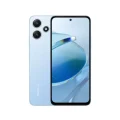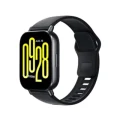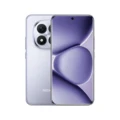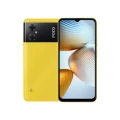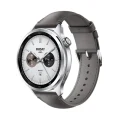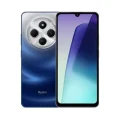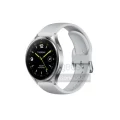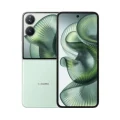Redmi Note 13
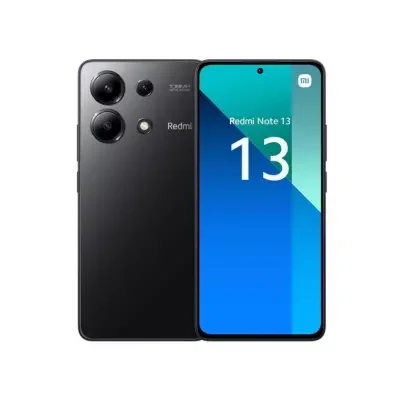
Redmi Note 13 - Specifications
General
| Device Type | Smart Phone |
| Model | N/A |
| Announced | 21 September, 2023 |
| Release Date | 30 October, 2023 |
| Estimated Price | $150 to $300 |
Network
| 2G Network | GSM 850 / 900 / 1800 / 1900 - SIM 1 & SIM 2 CDMA 800 |
| 3G Network | HSDPA 850 / 900 / 2100 CDMA2000 1x |
| 4G Network | 1, 3, 5, 8, 34, 38, 39, 40, 41 |
| 5G Network | 1, 5, 8, 28, 41, 78 SA/NSA |
| SIM SIM (Subscriber Identity Module) is a small card that contains mobile network subscriber's account information. This allows the phone using the card to attach to a mobile network. The SIM card is most commonly associated with GSM and UMTS mobile networks. Moving a SIM card from one phone to another allows a subscriber to switch mobile phones without having to contact their mobile network carrier. SIM cards can also be used by a phone to store limited amounts of data, such as phone numbers and text messages. | Dual SIM (Nano-SIM, dual stand-by) IP54, dust and splash resistant |
| Dual SIM | Yes |
| eSIM | No |
Camera
| Primary Camera is able to capture photographs and usually videos, The most important characteristics of a camera are the resolution (measured in megapixels), lens focus type (fixed or automatic), higher megapixel cameras are known to capture higher quality photos, but not always a good measurement of the photos quality. | 100 MP, f/1.7, (wide), 0.64µm, PDAF 2 MP, f/2.4, (depth) |
| Video | 1080p@30fps |
| Camera Features | LED flash, HDR, panorama |
| Built-In Flash Flash Light => There is commonly two types of flash lights are used in camera mobile phones, LED Flash (LED flash offers lower power consumption with drive circuitry that takes up very little room, LEDs can be strobed faster than any other light source), Xenon Flash (xenon flash produces an extremely intense full-spectrum white light for a very short duration) | Yes |
| Secondary | 16 MP |
Display
| Display Type Display Technology => A number of display technologies and types used in mobile phones => TFT (Thin Film Transistor), IPS (In-Place Switching), OLED (Organic Light Emitting Diode), AMOLED (Active-Matrix Organic Light-Emitting Diode), Super AMOLED (an even advanced version of AMOLED), Resistive Touchscreen (Resistive touchscreens contain two layer of conductive material with a very small gap between them which acts as a resistance), Capacitive Touchsceen (Capacitive touchscreen technology consists of a layer of glass coated with a transparent conductor) | AMOLED, 1B colors, 120Hz, 1000 nits (peak) |
| Size | 6.67 inches, 107.4 cm2 (~88.9% screen-to-body ratio) |
| Touch Screen | Multi-touch |
| Resolution | 1080 x 2400 pixels, 20:9 ratio (~395 ppi density) |
| Display Colors Display Colors is refers to the number of different shades of colors that the screen is capable of displaying => 64K colors, 256K colors and 16 million colors, Obviously 16M is highest available range of colors and better than others. | 16M Colors |
| Pixel Density Pixel Density (PPI) is refers to the concentration of pixels on a particular display, measured in pixels per inch (ppi). Pixel density is calculated by dividing the diagonal pixel resolution of a display by its diagonal size, higher pixel density better display quality. | (~395 ppi density) |
| Display Protection Display Protection => Gorilla Glass is a special alkali-aluminosilicate glass shield with exceptional damage resistance that helps protect mobile displays from scratches, drops, and bumps of everyday use, It is always better to go for a smartphone with Gorilla Glass for that added protection and peace of mind. | Corning Gorilla Glass 5 |
Design
| Dimensions | 161.1 x 75 x 7.6 mm (6.34 x 2.95 x 0.30 in) |
| Weight | 173.5 g (6.14 oz) |
| Colors | Black, White, Blue |
Media
| Radio | No |
| Loudspeaker | Yes |
Software
| Operating System OS => Every computer system run on a base software called Operating System (OS). Operating System controls all basic operations of the computer (such as smartphone, PDAs, tablet computers and other handheld devices). The Operating System allows the user to install and run third party applications (apps), apps are used to add new functionality to the device. | Android 13 |
| User Interface UI or user interface of a device is the look and feel of the on-screen menu system. How it works, its color scheme, how it responds to button presses, all of these things are part of the user interface. | MIUI 14 |
Hardware
| Chipset Chipset is a group of integrated circuits designed to perform one or a more dedicated functions, often with real time computing constraints, Popular smartphones are equipped with more advanced embedded chipsets that can do many different tasks depending on their programming. | Mediatek Dimensity 6080 (6 nm) |
| CPU CPU (Central Processing Unit) mostly known as processors, CPU processes instructions in order to carry out certain functions that make your device operate properly. Processors are often described as the brain of computers, smartphones and tablets, Smartphones and tablets rely on processors to carry out their every task, Processors are an incredibly important factor in selecting any type of computing device, including your smartphone. | Octa-core (2x2.4 GHz Cortex-A76 & 6x2.0 GHz Cortex-A55) |
| GPU GPU (Graphics Processing Unit) is a single-chip processor designed to rapidly manipulate and alter memory to accelerate the creation of images in a frame buffer intended for output to a display, This includes things such as lighting effects, object transformations, and 3D motion. | Mali-G57 MC2 |
| RAM (Memory) RAM (Random Access Memory) is a type of computer memory that can be accessed randomly, any byte of memory can be accessed without touching the preceding bytes that allows information to be stored and accessed quickly from random locations. RAM is the most common type of memory found in computer systems, smartphones, tablets and other electronic devices. | 6GB/8GB/12GB |
| Internal Storage Internal Storage is a data storage space (flash memory) mostly used in smartphones, tablets and other electronic devices where operating system, apps, music, photos, videos, files and other user data Is stored. | 128GB/256GB |
| Card Slot Memory Card Slot is a special slot for inserting a memory card. Memory cards allow you to expand the phone's built-in memory, A memory card (sometimes called a flash memory card or a storage card) is a small storage medium used to store data such as text, pictures, audio, and video, for use on small, portable or remote computing devices such as mobile phones, mp3 players, digital cameras. | No |
| Sensors Sensors are electronic components that detects and responds to some type of input from the physical environment. The specific input could be light, heat, motion, moisture, pressure and location, The output is generally a signal that is converted to use in computing systems, a location sensor, such as a GPS receiver is able to detect current location of your electronic device. | Fingerprint (side-mounted), accelerometer, gyro, proximity, compass |
Connectivity
| Bluetooth Bluetooth is a wireless communications technology for exchanging data between mobile phones, headsets, computers and other network devices over short distances without wires, Bluetooth technology was primarily designed to support simple wireless networking of personal consumer devices. | 5.3, A2DP, LE |
| Infrared Infrared connectivity is an old wireless technology used to connect two electronic devices. It uses a beam of infrared light to transmit information and so requires direct line of sight and operates only at close range. | |
| Wi-fi Wi-Fi is a popular wireless networking technology using radio waves to provide high-speed network connections that allows devices to communicate without cords or cables, Wi-Fi is increasingly becoming the preferred mode of internet connectivity all over the world. | Wi-Fi 802.11 a/b/g/n/ac, dual-band |
| Wi-fi Hotspot | |
| USB | USB Type-C 2.0 |
| GPS GPS The Global Positioning System is a satellite-based radio navigation system, GPS permits users to determine their position, velocity and the time 24 hours a day, in all weather, anywhere in the world, In order to locate your position, your device or GPS receiver must have a clear view of the sky. | GPS (L1), GLONASS (G1), BDS (B1), GALILEO (E1) |
| NFC NFC (Near field communication) is a set of standards for smartphones and similar devices to establish peer-to-peer radio communications with each other by touching them together or bringing them into proximity, usually no more than a few inches. | |
| HDMI HDMI (High-Definition Multimedia Interface) is a compact audio/video interface for transferring uncompressed video data and compressed or uncompressed digital audio data from a HDMI-compliant source device to a compatible computer monitor, video projector, digital television, or digital audio device. | |
| Wireless Charging Wireless Charging (Inductive Charging) uses an electromagnetic field to transfer energy between two objects. This is usually done with a charging station. Energy is sent through an inductive coupling to an electrical device, which can then use that energy to charge batteries or run the device. | N/A |
Data
| GPRS GPRS (General Packet Radio Service) is a packet oriented mobile data service on the 2G and 3G cellular communication system's global system for mobile communications (GSM), Generally, GPRS is used for the purpose of wireless data transfer, such as sharing pictures and videos or browsing the Internet via a mobile phone connection. | |
| EDGE EDGE (Enhanced Data GSM Environment) is a wireless network technology generally considered the next step in the 2G network offers data transfer rates up to four times faster than ordinary GSM networks, Generally, EDGE is used for the purpose of wireless data transfer, such as sharing pictures and videos or browsing the Internet via a mobile phone connection. | |
| Speed | HSPA, LTE-A (CA), 5G |
| Web Browser Web Browser => a web browser is a software application used to locate, retrieve and display content on the World Wide Web, including Web pages, images, video and other files, The primary function of a web browser is to render HTML, the code used to design or markup webpages. | HTML5 |
Messaging
| SMS SMS (Short Messaging Service) is a text messaging service component of phone, Web, or mobile communication systems. It uses standardized communications protocols to allow mobile phone devices to exchange short text messages over the networks. | Yes (threaded view) |
| MMS MMS (Multimedia Messaging Service) is a standard way to send messages that include multimedia content (audio clips, video clips and images) to and from mobile phones over wireless networks using the WAP protocol. | |
| Email Email (Electronic Mail) is a system for receiving, sending, and storing electronic messages, Similar to a letter, email is text messages that may contain files, images, or other attachments sent via the internet to a recipient by using applications and software prograps. An email address is required to receive email, and that address is unique to the user. | Yes |
| IM IM (Instant Messaging) is an exchange of text messages through a software application, it enable you to create a kind of private chat room with another individual in order to communicate in real time over the Internet. | Yes |
Battery
| Battery Type Battery Type => Cell phones run on various kinds of batteries depending on the manufacturer, phone size or shape and features. There are basically four types of cell phone batteries => Lithium Polymer, Lithium Ion, Nickel Metal Hydride and Nickel Cadmium. | Li-Po |
| Capacity Battery Capacity is a measure (typically in Amp-hr) of the charge stored by the battery, and is determined by the mass of active material contained in the battery. The battery capacity represents the maximum amount of energy that can be extracted from the battery under certain conditions. | 5000 mAh |
| Placement | Non-Removable |
| Charging | 33W wired |
The Redmi Note 13 Price in Pakistan starts from ₨ 77,999. The Xiaomi Redmi Note 13 has 6GB RAM and 128GB Storage with Android 13 and comes in Black, White, and Blue colors. The smartphone went on sale in September 2023.
Design and display: The Redmi Note 13 has a flat 6.7-inch AMOLED display with a 120Hz refresh rate. The display is bright and colorful, and it offers good viewing angles. The 120Hz refresh rate makes the animations and scrolling on the phone look smooth and fluid.
Cameras: The Redmi Note 13 has a triple rear camera system with a 100MP primary sensor, an 8MP ultrawide sensor, and a 2MP macro sensor. The main camera takes good photos in daylight, but the quality drops in low light. In addition, the ultrawide camera is helpful for taking landscape photos, and the macro sensor is useful for taking close-up pictures. The front-facing camera has a resolution of 16MP and takes decent selfies.
Software: The Redmi Note 13 comes with Android 13 with MIUI 14. MIUI is a heavily customized version of Android, but it is still easy to use. There are a lot of features and options to explore, and the overall experience is good.
Performance: The Xiaomi Redmi Note 13 is powered by the MediaTek Dimensity 7200 SoC, a capable mid-range chipset. The phone comes with up to 12GB of RAM and 512GB of storage, which is enough for most users.
The Xiaomi Redmi Note 13 is a powerhouse when it comes to performance. Its strong processor makes multitasking, gaming, and running heavy apps a breeze. With plenty of RAM, everything runs smoothly, so you won’t experience any lag while switching between apps, streaming shows, or diving into intense gaming sessions. Overall, the Xiaomi Redmi Note 13 gives you a smooth and efficient experience!
Battery: The Xiaomi Redmi Note 13 has a 5000mAh battery that supports 67W fast charging. The battery life is excellent, and the phone can easily last a full day on a single charge. The 67W fast charging allows you to charge the phone from 0 to 100% in about 30 minutes.
The Xiaomi Redmi Note 13 stands out with its excellent battery life, which keeps you powered up all day. Plus, with its fast charging tech, you can juice it up quickly and return to what you did in no time. This intelligent battery design lets you stay connected without always hunting for a charger.
Conclusion
The Xiaomi Redmi Note 13 Pro shows off what Xiaomi can do when mixing excellent performance with intelligent design. With its powerful specs, easy-to-use interface, and stylish look, it’s a solid pick for anyone wanting a mid-range phone that’s both practical and good-looking. Whether tackling everyday tasks or diving into your favorite shows, the Redmi Note 13 Pro offers a fun and smooth experience.
Moreover, the phone will be available to buy online soon on websites like OLX, Daraz, and PriceOye. You can also find it in other popular online stores in Pakistan. For the latest phones, smartwatches, and tablets, check out the best deals, coupons, offers, comparisons, reviews, and more!!!
Who should buy the Xiaomi Redmi Note 13?
Further, the Xiaomi Redmi Note 13 is an excellent option for users looking for a value-for-money mid-range smartphone. It has a large, bright display, a long-lasting battery, and up to 12GB of RAM and 512GB of storage. It also has a decent camera system and a good software experience.
Who should not buy the Xiaomi Redmi Note 13?
The Xiaomi Redmi Note 13 is not the best option for users looking for a smartphone with a great camera system or many zoom capabilities. It also does not have a 3.5mm headphone jack, so you must use a wireless adapter or USB-C headphones to listen to music with your phone.


